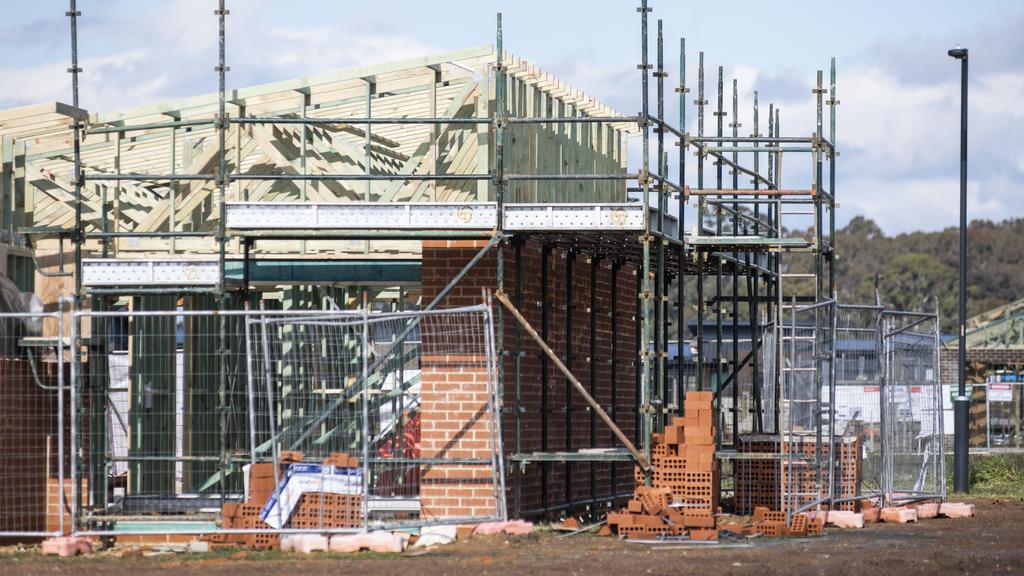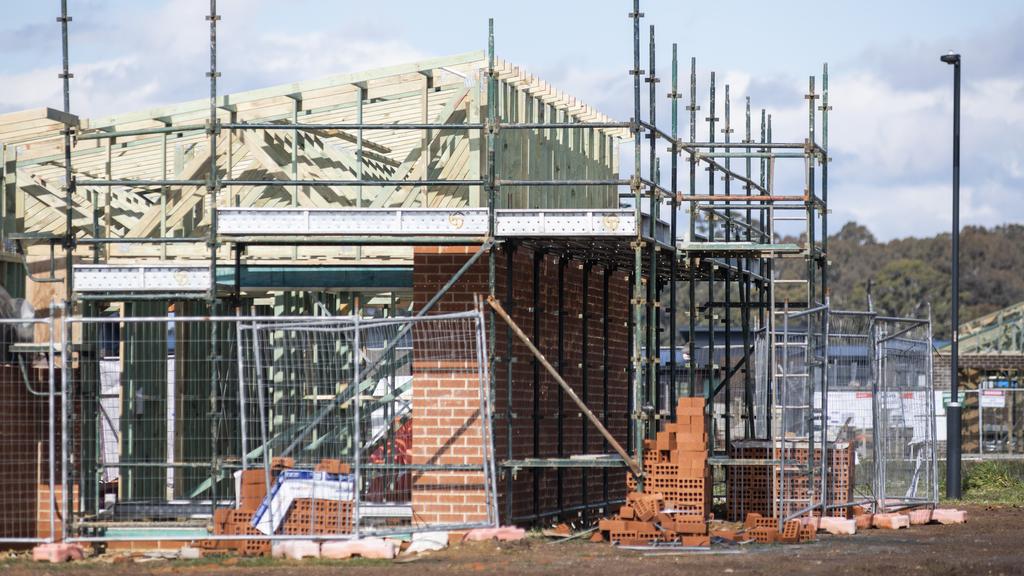Housing construction to worsen before improving: Housing Industry Association

Construction is expected to pick up in 2024 after a year of lows. Picture: Martin Ollman/NCA NewsWire
Construction pipelines in Sydney and Melbourne have eroded and are unlikely to stage a recovery until late 2025, according to the latest Housing Industry Association outlook.
Economic growth is also set to slow further next year as core leading indicators – building approvals, lending and consumer confidence – currently sit at or around some of the lowest levels in decades.
The sector is already under pressure as detached housing starts fell 11.7 per cent nationally over the June quarter to 24,740 houses, the lowest level in a decade. Starts are expected to fall 10.9 per cent further through 2023/24 and hit the bottom of the cycle, remaining stable in the following financial year before staging a modest recovery in 2026/27.
Units and townhouse construction through the past financial year was at the lowest in over a decade and barely more than half the annual peak during the 2015-18 apartment boom.
However, building is expected to bounce back by 22.3 per cent to 76,160 units over the year to June 2024, and another 19.0 per cent in FY2024/25.

The Housing Industry Association outlook for the next few years paints a bleak picture for the Sydney and Melbourne home building market, with little left in construction pipelines. Picture: Martin Ollman/NCA NewsWire
While “there remains a solid volume” of building work for the industry to quickly complete in the first half of 2024, not all markets are performing at the same levels.
HIA chief economist Tim Reardon said low volume builders out of the country’s two largest cities are not feeling the same pressure.
“There’s nothing left in the Sydney and Melbourne pipelines,” Mr Reardon said. “Both are currently going through a cold shower in terms of the switch from the boom conditions at the start of the pandemic to what will be a very tough and competitive year in 2024.”
Adelaide and Perth appeared to have hit the bottom of its construction downturn earlier this year and have already started to improve.
Brisbane’s construction levels are building “significant momentum” ahead of the 2032 Olympic Games, now sitting marginally lower than 2019.
The HIA outlook noted migration is obscuring the adverse impacts of the interest rate cycle, with a and the absence of productivity growth causing households to be in a worse financial position than they were six months ago.
Challenger chief economist Jonathan Kearns does not expect this “mild recession” the country is facing to worsen further. “What we’re really talking about is a contraction in living standards,” he said.
“Given the strong population growth we’re experiencing and relatively weak economic growth, it’s likely that contraction in GDP per capita will persist for another half year or so at least.
“Yes, we’re in a mild recession, what we really care about is not having a deep recession.”
The HIA anticipates the first cut to the cash rate is likely in the second half of 2024, despite the growing expectation of one further rate hike in February.







